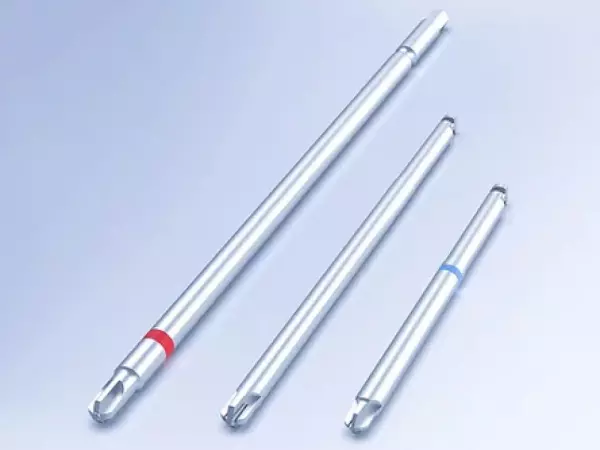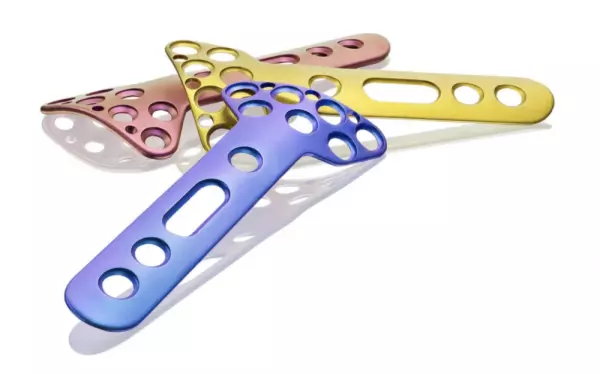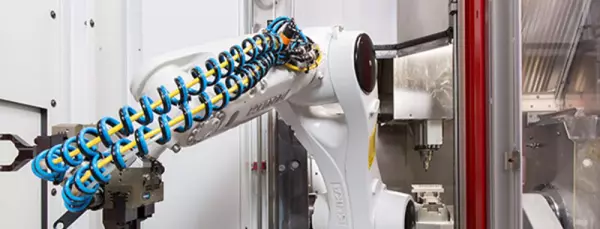
Orthopedic Products - Inserting Tools
The product range of cutting tools in the field of orthopedics includes: Phillips blades...
Portal and digital medical technology fair of the largest MedTech cluster in Germany

Orthopedic Products - Inserting Tools
The product range of cutting tools in the field of orthopedics includes: Phillips blades...

Titanium Anodising Type III color anodising...
TYP-III colour anodising - colour anodising makes the difference TYP-III colour anodising covers...

Of course, there are special requirements for implant production, especially when it comes to larg...

EpiFIX™ Growth-Control-Plate - Sterile single-use...
EpiFIX™ Growth-Control-Plate - Sterile single-use kit for growth control A signif...

Instruments and implant systems for osteosynthesis
Plates and Screws for mini, small and large fragments are only a selection from our wide range. With...

A Bone compression plate is a device used to support vertebrae. It helps the body maintain a normal relationship between vertebrae. A bone graft is generally placed between two bones. This bone graft can be made of synthetic material or bone. The device is secured in place by screws. Once attached, the pressure from the screw drives the plate onto the bone. This allows the bone to be brought back into its proper shape.
The device is attached to the bone using fasteners. The screws are inserted through the elongated slot of the bone and into two or more holes. Once attached, the screw is replaced by an ordinary bone screw. The screws hold the plate firmly in place. The drive mechanism of the device nullifies the countercompressive forces at the fracture site during installation. As the bone ends pull apart during installation, the compressive force set by the surgeon relaxes and translate into countercompressive forces at the pin extension 22 and the hook 72. The screw and the threaded shaft are not able to rotate, and the compressive force stays constant.
The bone compression device is comprised of a surgical plate and a fastener. The first portion of the plate is attached to the first vertebral body. The second portion is attached to the second vertebral body. A tensioner is used to switch between the two states. This mechanism allows the surgical plate to transition from one state to the other. The tensioner is typically designed to move the plate from its first state to its second.
The bone compression device is attached to more than three vertebrae and is installed using screws. This device is often used in conjunction with a synthetic bone graft to repair spinal injuries. The plate can be incorporated into the vertebrae using biologically active substances that help bone grow over the synthetic graft. In some cases, a synthetic bone graft will be inserted in these spaces. This method is considered more permanent than surgery.
The procedure to install the bone compression plate requires a small incision in the bone. The plate is then inserted through the incision. It has an elongated hole, which is used to keep the bone in place. Once the device is in place, it is fixed by the screws. A screw is required to secure the device to the bone. An ordinary screw is used to tighten the plate. This is done to keep the plate in place.
A bone compression plate is typically elongated. It has a transverse centerline and four slitlike holes. The first and second holes are positioned diagonally, whereas the third is located near the second end. It is also preferably long enough to accommodate the bone. If the screws are too short, the plates will not be effective. In general, a Bone compression plate is a permanent bone repair.
Become a digital exhibitor yourself in the online portal of the largest and best-known MedTech cluster region in Germany and inform the world of medical technology about your products and services as well as about news, events and career opportunities.
With an attractive online profile, we will help you to present yourself professionally on our portal as well as on Google and on social media.